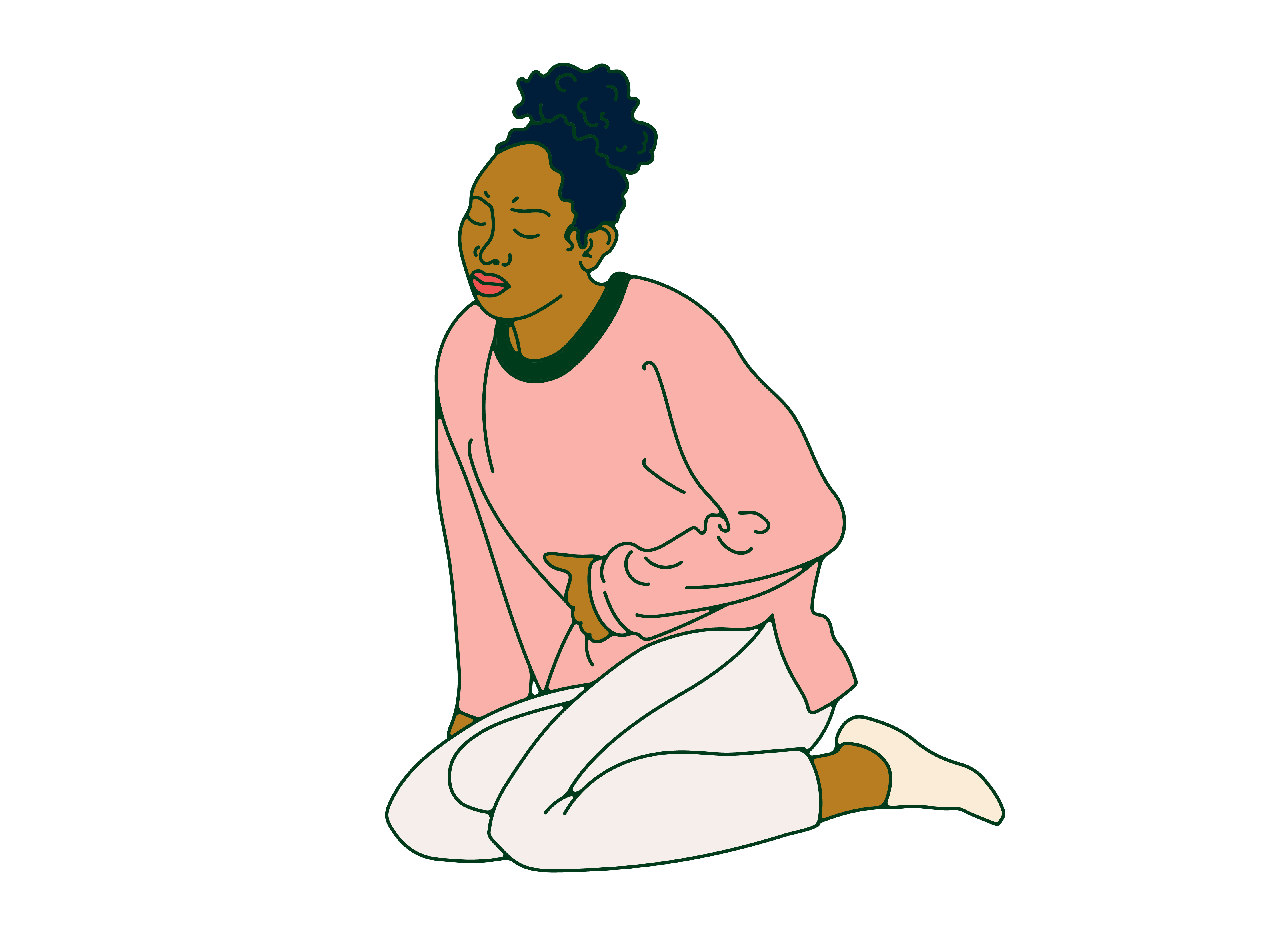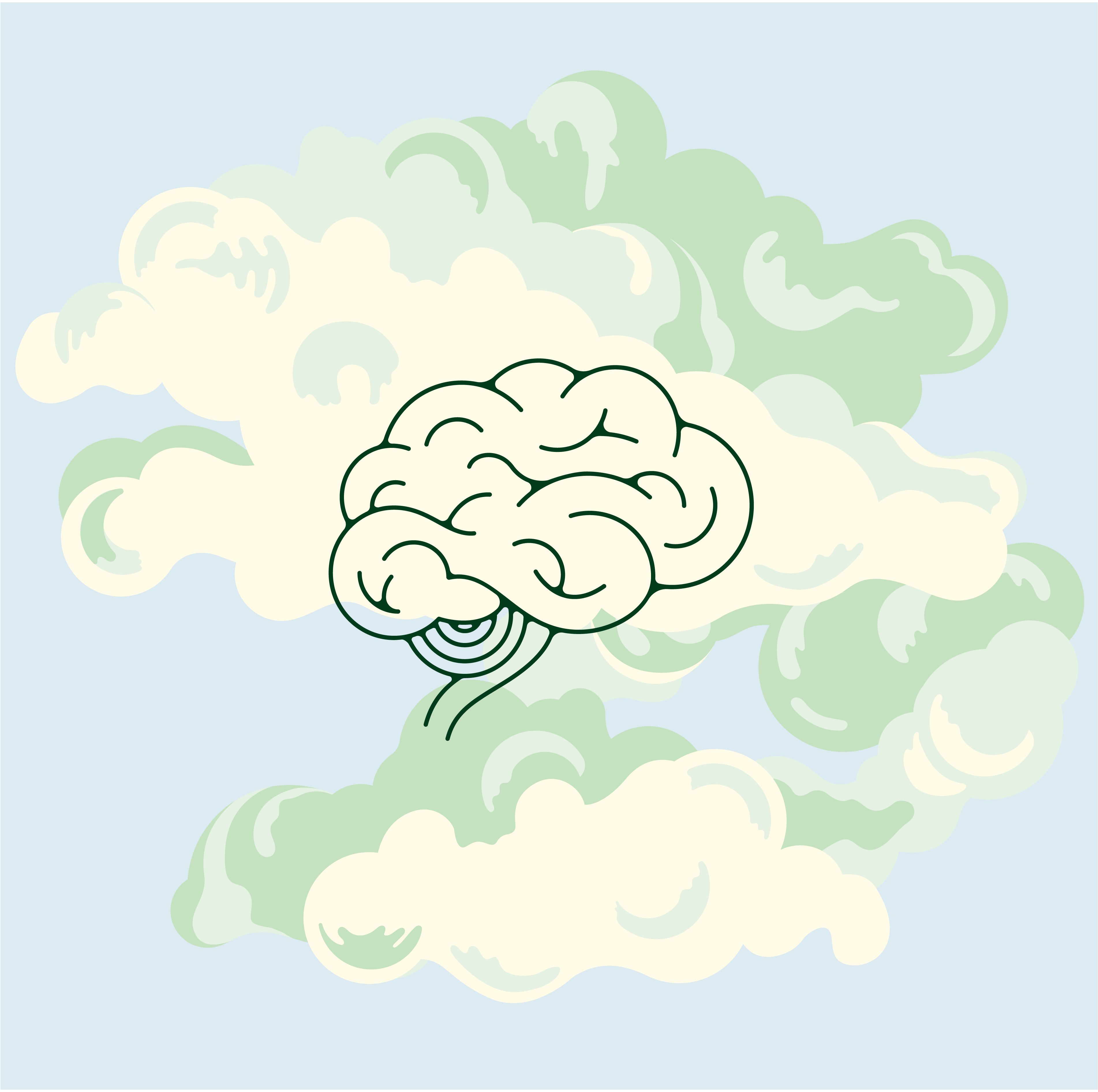Illustrated by Erin Rommel
Bloating. Headaches. Cramps. We're all familiar with the physical symptoms your period can cause, but your menstrual cycle is also heavily linked to your emotional state and mental health.
Keep reading to better understand the relationship between mental health and the menstrual cycle, and what the difference is between PMS, PME and PMDD.
What causes PMS?
Premenstrual syndrome (PMS) is a massively under-researched and misunderstood experience, but as many as 90% of people who menstruate experience unpleasant physical or emotional premenstrual symptoms.
Not to mention that as both mental health and the menstrual cycle are still taboo topics, the relationship between the two is often either neglected, or outright dismissed.
Symptoms of PMS have been reduced to a punchline because they’re considered a “women’s problem”, ie. not worth taking seriously, and it’s getting in the way of our mental wellbeing.
Although we know it’s linked to how women’s bodies react to hormonal fluctuations, the exact cause of PMS remains unclear. What is undeniable, however, is that for some women PMS can definitely affect their mood.
Hormonal changes and how they affect your mood
Hormones fluctuate every day of your cycle, but they largely go unnoticed until one or two weeks before your period – that’s typically when the ~feels~ come in.
During the follicular phase, oestrogen levels rise as an egg is prepared to be released, and peak right before ovulation (which happens around day 14 of your cycle).
After ovulation, the levels of oestrogen drop dramatically. Then, during the luteal phase (AKA PMS week) they have a second, smaller, peak, while progesterone levels rise and then drop. By the time your period arrives, both oestrogen and progesterone levels are really low.
It’s worth noting that everyone experiences PMS differently, and in most women there are no clinically significant changes in mood across their cycle. For some it’s barely a blip in the month, but for others the week leading up to menstruation routinely leaves them irritable, moody or sad.
“Although the exact mechanisms of PMS aren’t as well understood as other disorders such as anxiety or depression, one of the main theories is based upon a chemical called allopregnanolone,” explains Daye’s Deputy Head of Research, Dr. Harry Baxter.
“Allopregnanolone is made by the brain from progesterone, and acts like your body’s own natural brand of Xanax. During the luteal phase (when your progesterone levels are peaking), your brain gets used to the anxiety-calming and sedative effects of all the allopregnanolone,” Dr. Baxter explains.
“When your progesterone levels plummet pre-menstruation, your brain is suddenly starved of allopregnanolone and experiences a 'come-down' – kind of like an endorphin hangover. This allopregnanolone hangover is what scientists believe contributes to the PMS symptoms of anxiety, irritability and mood disturbances.”
The second theory is that the drastic fluctuation of oestrogen and progesterone influence the levels of serotonin, a neurotransmitter that helps regulate appetite, sleep cycle and – most importantly – mood.
How someone reacts to hormone fluctuations is completely subjective, but low levels of serotonin have been linked to common symptoms of PMS like sadness, irritability, anxiety and gloominess. So during this time you’re not just feeling low or moody because of migraines, cramps and sore boobs: your brain may actually be mimicking a depressed state.
PME and PMDD

PMS is also known to aggravate existing mental illnesses, a phenomenon referred to as premenstrual exacerbation (PME).
“Premenstrual exacerbation of an underlying disorder occurs when a woman has a chronic diagnosis that is made worse prior to – and potentially during – her period,” says Tory Eisenlohr-Moul, PhD, a clinical psychologist and scientist studying how the menstrual cycle influences emotions and behaviours in hormone-sensitive females.
But if your psychological symptoms are so debilitating that they interfere with your day-to-day, it may be an indication that you suffer from Premenstrual Dysphoric Disorder (PMDD).
Often referred to as severe PMS, PMDD causes severe and life-impairing emotional (and sometimes physical) symptoms that can last anywhere from one to two weeks prior to your period.
The symptoms are so intense that it can make it hard to work and socialise, and in some cases even lead to suicidal thoughts.
Although PMDD is classified as an endocrine disorder (meaning that it’s hormone-related), it’s recently been listed as a mental health disorder alongside depression, bipolar and general anxiety.
“But these symptoms only happen between ovulation and menstrual bleeding. So the symptoms look like a severe mood disorder, but they are only present in that premenstrual window,” says Eisenlohr-Moul.
As with PMS, the condition is largely understudied, even though it affects as many as one in 20 women and people assigned female at birth.
“Many clinicians just don't know about PMDD, or they think it's just mild PMS that will improve with a bit of self-care,” explains Eisenlohr-Moul.
“The experimental research validating this condition as a hormone sensitivity disorder only came out in 1998, so the research area is young, and there just hasn't been enough education of the medical community yet.”
There’s a misconception that PMDD (and generally PMS too) is caused by abnormal hormone levels, but in reality it’s due to an abnormal brain sensitivity to normal hormone changes. So how common is this kind of hormone sensitivity?
“We aren't sure,” says Eisenlohr-Moul, “and we don't know exactly what the predictors are yet, but diagnosable premenstrual dysphoric disorder is found in about 5% of females.”
PMDD diagnosis
“In order to meet the diagnostic criteria for PMDD, you must have at least 1 of the emotional symptoms – and at least five symptoms total – that follow this cyclical pattern of becoming severe premenstrually, and then "shutting off" after menses for an extended period of time,” says Eisenlohr-Moul.
“So there must be this on-off pattern. Many individuals believe they have PMDD but they actually are experiencing PME, such as when someone with generalised anxiety disorder has symptoms all the time that are troubling, but develops much more distressing symptoms in the premenstrual week. We don't know yet whether the underlying biological causes are the same or different from PMDD and PME, but that's something that is being studied. Differentiating PMDD from PME is a tricky task, but it can be done.”
Eisenlohr-Moul also specifies that what separates PMDD from PMS is that while the latter is a normal part of the menstrual cycle, PMDD is not – and it’s important to recognise the difference.
“Creating a specific diagnosis like PMDD effectively de-pathologises the normal female experience. By directly identifying those suffering from this medical condition, we debunk the stereotype that all females are “over-emotional” or “simply hormonal” when irritable or upset. By acknowledging the presence of PMDD, we actually reject the idea that all females are impaired by their cycle.”
At the moment, getting a PMDD diagnosis is challenging, and 90% of cases go undiagnosed. Eisenlohr-Moul adds that stigma and shame surrounding mental health symptoms and the menstrual cycle might also be preventing sufferers themselves from talking about it.
For more support and information about PMDD, visit Mind.






